#agrobots
Explore tagged Tumblr posts
Text
Unveiling the eFarming Challenge: Your Gateway to the Decade’s Most Exciting Opportunity
PLEASE-$$SHARE AND EARN$$ $$MONEY$$-I am sending you 1π! Pi is a new digital currency developed by Stanford PhDs, with over 47 million members worldwide. To claim your Pi, earn $$$1000s$$$ free, just run it once a day!! TRY IT'S FREE!! follow this link https://minepi.com/vabsssss and use my username (vabsssss) as your invitation code.
#eFarming#AgTech#SmartFarming#PrecisionAg#DigitalAgriculture#AgInnovation#FarmTech#FutureOfFarming#SustainableAg#FarmData#IoTinAg#VerticalFarming#AgBlockchain#CropMonitoring#AgDataAnalytics#UrbanFarming#FarmtoTable#AgRobotics#ClimateSmartAg#AgriTech
0 notes
Text
Automation in Agriculture: Harvesting Robot Market Growth Insights
Astute Analytica, a prominent market research firm, has recently published a comprehensive report that offers an extensive analysis of the global Harvesting Robot market. This report goes beyond mere statistics, providing deep insights into various critical aspects such as market segmentation, key players, market valuation, and regional overviews. It serves as a valuable resource for businesses and stakeholders seeking to navigate this evolving industry landscape.
Market Valuation
The report includes a thorough evaluation of the market valuation, drawing from historical data, current trends, and future projections. By employing rigorous analytical methods, it effectively captures the growth trajectory of the market. This detailed assessment allows businesses to understand the factors driving growth and make informed decisions regarding investments and strategic initiatives.
Harvesting robot market was valued at US$ 853.3 million in 2023 and is anticipated to reach valuation of US$ 4,815.3 million by 2032 at a CAGR of 21.2% during the forecast period 2024–2032.
A Request of this Sample PDF File@- https://www.astuteanalytica.com/request-sample/harvesting-robot-market
Comprehensive Market Overview
Astute Analytica's report provides a holistic overview of the global Harvesting Robot market. It encapsulates a wide array of information related to market dynamics, including growth drivers, challenges, and opportunities. Stakeholders can leverage these insights to formulate effective strategies and maintain a competitive edge in the market.
Key Players in the Market
The report identifies and profiles the major players who are influencing the global Harvesting Robot market. Through meticulous research, it presents a clear view of the competitive landscape, detailing the strategies, market presence, and significant developments of leading companies. This section is vital for stakeholders who wish to understand the positioning and actions of their competitors.
Key Companies:
Agrobot
Dogtooth Technologies Limited
FFRobotics
Green Robot Machinery Pvt. Ltd.
Harvest Automation
HARVEST CROO
Other Prominent Players
Tomato Harvester Companies
CERESCON B.V.
Panasonic
Energid Technologies Corporation
Four Growers
Metomotion
Root Al, Inc.
Tortuga Agriculture Technologies, Inc.
Appharvest
Inaho Inc.
Denso Design
Xihelm
Certhon Harvest Robot
Squse
Other Prominent Players
For Purchase Enquiry: https://www.astuteanalytica.com/industry-report/harvesting-robot-market
Segmentation Analysis
A crucial component of the report is the segmentation analysis, which delves into various market segments based on industry verticals, applications, and geographic regions. This detailed examination provides stakeholders with a nuanced understanding of market dynamics, enabling them to identify opportunities for growth and areas for investment.
Market Segmentation:
By Robot Type
Semi-Autonomous Robots
Fully Autonomous Robots
By Harvesting Type
Fruit Harvesting
Vegetable Harvesting
Leafy Vegetables
Pumpkin
Lettuce
Cabbage
Others
Fruit Vegetables
Tomato
Cucumber
Okra
Others
Seed Vegetables
Egusi Melon
Ito Melon
Others
Root Vegetables
Sweet Potato
Irish Potato
Carrot
Raddish
Others
Spices
Chilli Pepper
Garlic
Basil
Others
Grain Harvesting
Others
By Application
Outdoor Agriculture
Greenhouse Agriculture
By Vegetable Harvesting Application
Outdoor Agriculture
Leafy Vegetables
Pumpkin
Lettuce
Cabbage
Others
Fruit Vegetables
Tomato
Cucumber
Okra
Others
Seed Vegetables
Egusi Melo
Ito Melon
Others
Root Vegetables
Sweet Potato
Irish Potato
Carrot
Raddish
Others
Spices
Chilli Pepper
Garlic
Basil
Others
Greenhouse Agriculture
Leafy Vegetables
Pumpkin
Lettuce
Cabbage
Others
Fruit Vegetables
Tomato
Cucumber
Okra
Others
Seed Vegetables
Egusi Melon
Ito Melon
Others
Root Vegetables
Sweet Potato
Irish Potato
Carrot
Raddish
Others
Spices
Chilli Pepper
Garlic
Basil
Others
By Region:
North America
The U.S.
Canada
Mexico
Europe
Western Europe
The UK
Germany
France
Italy
Spain
Rest of Western Europe
Eastern Europe
Poland
Russia
Rest of Eastern Europe
Asia Pacific
China
India
Japan
Australia & New Zealand
South Korea
ASEAN
Rest of Asia Pacific
Middle East & Africa (MEA)
UAE
Saudi Arabia
Rest of MEA
South America
Argentina
Brazil
Rest of South America
Research Methodology
Astute Analytica is recognized for its rigorous research methodology and dedication to delivering actionable insights. The firm has rapidly established a solid reputation by providing tangible outcomes to clients. The report is built on a foundation of both primary and secondary research, offering a granular perspective on market demand and business environments across various segments.
Beneficiaries of the Report
The insights presented in this report are invaluable for a range of stakeholders, including:
Industry Value Chain Participants: Those directly or indirectly involved in the Harvesting Robot market need to stay informed about leading competitors and current market trends.
Analysts and Suppliers: Individuals seeking up-to-date insights into this dynamic market will find the report particularly beneficial.
Competitors: Companies looking to benchmark their performance and assess their market positions can leverage the data and analysis provided in this research.
Astute Analytica's report on the global Harvesting Robot market is an essential resource that empowers stakeholders with the knowledge needed to navigate and thrive in this competitive landscape.
Download Sample PDF Report@- https://www.astuteanalytica.com/request-sample/harvesting-robot-market
About Astute Analytica:
Astute Analytica is a global analytics and advisory company that has built a solid reputation in a short period, thanks to the tangible outcomes we have delivered to our clients. We pride ourselves in generating unparalleled, in-depth, and uncannily accurate estimates and projections for our very demanding clients spread across different verticals. We have a long list of satisfied and repeat clients from a wide spectrum including technology, healthcare, chemicals, semiconductors, FMCG, and many more. These happy customers come to us from all across the globe.
They are able to make well-calibrated decisions and leverage highly lucrative opportunities while surmounting the fierce challenges all because we analyse for them the complex business environment, segment-wise existing and emerging possibilities, technology formations, growth estimates, and even the strategic choices available. In short, a complete package. All this is possible because we have a highly qualified, competent, and experienced team of professionals comprising business analysts, economists, consultants, and technology experts. In our list of priorities, you-our patron-come at the top. You can be sure of the best cost-effective, value-added package from us, should you decide to engage with us.
Get in touch with us
Phone number: +18884296757
Email: [email protected]
Visit our website: https://www.astuteanalytica.com/
LinkedIn | Twitter | YouTube | Facebook | Pinterest
0 notes
Text

Medicinal Cannabis Market Driving Growth Owing to Increased Legalization
Medicinal cannabis, also known as medical marijuana, refers to using the whole unprocessed marijuana plant or its basic extracts to treat symptoms of illnesses and other conditions. It is most commonly used to treat chronic pain, muscle spasms, nausea caused by chemotherapy, neurological disorders, epilepsy, and mental disorders such as depression, anxiety and post-traumatic stress disorder. The legalization of medicinal cannabis across various countries is fueling its demand as an alternative to prescribed medication to treat medical ailments.
The Global Medicinal Cannabis Market is estimated to be valued at US$ 14589.08 Bn in 2024 and is expected to exhibit a CAGR of 13.% over the forecast period 2024 to 2031. Key Takeaways Key players operating in the Medicinal Cannabis Market are Deere & Company, AGCO Corporation, Agribotix LLC, Agrobot and Blue River Technology. These players are focusing on introducing advanced technologies for cultivation and production of cannabis to meet the growing demand. The key opportunities in the market include expanding product portfolio, strategic partnerships, and increasing geographical presence. Various countries are legalizing cannabis for medical use which is creating new opportunities for market players. Technological advancements such as controlled environment agriculture, artificial intelligence, indoor farming, and analytics are enabling efficient cultivation of cannabis. Smart greenhouses with sensors and robotic equipment are helping increase yield while reducing production costs. Market Drivers Increased legalization of medicinal cannabis across major countries is a key driver boosting the market growth. Countries like Canada, Germany, Italy, Australia, Chile, Colombia, and several U.S. states have legalized medical cannabis over the past decade. This has expanded access to patients and increased production. Growing acceptance of cannabis in treating health issues is further fueling the demand. Rising investments in development of advanced cannabis varieties through plant breeding is also propelling the market.
Current Challenges in Medicinal Cannabis Market The Medicinal Cannabis Market Demand is still evolving with various challenges. One major challenge is the variable legality and regulations across different geographies. While many countries and states have legalized medical cannabis, it is still considered as an illegal drug in others. This regulatory uncertainty poses difficulty for businesses to expand globally and gain acceptance. Another challenge is the limited number of high-quality clinical studies to prove the medical efficacy and advantages of various cannabis-based medicines. More extensive research is still needed to understand the potential of cannabis-based therapeutics better. On the production front, developing standardized cultivation and manufacturing practices is challenging due to the complexity involved. This impacts the consistency and quality of medical cannabis products. Lastly, with medical cannabis being a new category, its acceptance among medical professionals and patients is still a work in progress which requires more awareness and advocacy.
Get more insights on Medicinal Cannabis Market
About Author:
Ravina Pandya, Content Writer, has a strong foothold in the market research industry. She specializes in writing well-researched articles from different industries, including food and beverages, information and technology, healthcare, chemical and materials, etc. (https://www.linkedin.com/in/ravina-pandya-1a3984191)
0 notes
Text
Enhancing Efficiency in Poultry Farming: The Role of Egg Printing Machines by Hybrid Agrobots
In the fast-paced world of poultry farming, efficiency and accuracy are crucial for success. As consumer demand for traceable and well-packaged eggs increases, farmers and processors must adopt advanced technologies to stay competitive. One such innovation is the egg printing machine, a vital tool in modern poultry equipment manufacturing. Hybrid Agrobots Pvt. Ltd. is at the forefront of this technological revolution, offering cutting-edge solutions to enhance productivity and streamline operations in poultry farming.
The Importance of Egg Printing Machines
Egg printing machines play a crucial role in the poultry industry by ensuring that eggs are properly labeled with essential information such as the date of laying, expiration date, and sometimes even the farm of origin. This not only helps in meeting regulatory requirements but also builds consumer trust by providing transparency.
Key Features of Hybrid Agrobots' Egg Printing Machines
High Precision Printing: Hybrid Agrobots' egg printing machines are equipped with advanced technology that ensures high precision in printing. This means clear, legible markings on every egg, which is crucial for both compliance and consumer information.
Speed and Efficiency: Designed to handle high volumes, these machines can print on thousands of eggs per hour, significantly speeding up the packing process. This high throughput capacity is essential for large-scale poultry operations looking to maximize efficiency.
Ease of Integration: Hybrid Agrobots' machines are designed to integrate seamlessly with other poultry equipment, such as egg packing machines. This compatibility ensures a smooth workflow from printing to packing, reducing downtime and increasing overall efficiency.
Durability and Reliability: Built to withstand the harsh conditions of poultry farms, these machines are robust and reliable, ensuring long-term performance with minimal maintenance.
Benefits of Using Egg Printing Machines
Implementing egg printing machines from Hybrid Agrobots brings numerous advantages to poultry farmers and processors:
Compliance with Regulations: Ensuring that all eggs are correctly labeled helps farms comply with local and international regulations, avoiding fines and other legal issues.
Enhanced Traceability: Clear labeling allows for better traceability, which is essential in the event of a recall. This transparency builds consumer trust and can be a significant marketing advantage.
Increased Efficiency: Automating the printing process reduces the need for manual labor, allowing workers to focus on other critical tasks. This not only boosts productivity but also reduces labor costs.
Improved Product Quality: Consistent and accurate labeling ensures that consumers receive high-quality products, enhancing brand reputation and customer loyalty.
The Role of Egg Packing Machines
Egg printing is just one part of the process. Efficient egg packing is equally important to ensure that eggs reach consumers in perfect condition. Hybrid Agrobots' egg packing machines work in tandem with their printing machines to provide a complete solution for poultry farms. These packing machines are designed to handle eggs with care, reducing the risk of breakage and ensuring that eggs are packed quickly and efficiently.
Hybrid Agrobots: Leading Poultry Equipment Manufacturing
Established in 2022, Hybrid Agrobots Pvt. Ltd. has quickly become a leader in poultry equipment manufacturing. Their commitment to innovation and quality is evident in their range of products, designed to meet the diverse needs of modern poultry farms. By focusing on sustainable practices and cutting-edge technology, Hybrid Agrobots is helping to drive the industry forward.
Conclusion
In the competitive world of poultry farming, efficiency and precision are paramount. Egg printing machines by Hybrid Agrobots offer a robust solution to enhance productivity, ensure compliance, and build consumer trust. By integrating these machines with advanced egg packing equipment, poultry farms can achieve a seamless, efficient operation that meets the highest standards of quality and transparency. Hybrid Agrobots continues to lead the way in poultry equipment manufacturing, providing the tools and technology necessary for success in today's market.
1 note
·
View note
Text
Detailed Global Research Forecast: Smart Vineyard and Orchard Equipment Market | BIS Research

In the ever-evolving landscape of agriculture, technological innovations are reshaping traditional practices, and the smart vineyard and orchard equipment industry stands at the forefront of this transformation.
The Global Smart Vineyard and Orchard Equipment Market was valued at $3.56 billion in 2022, and it is expected to grow with a CAGR of 9.2% during the forecast period 2023-2028 to reach $5.95 billion by 2028.
Technological Advancements in Agriculture
Rise of Precision Agriculture: Precision agriculture has become a cornerstone in modern farming, enhancing productivity, resource efficiency, and sustainability. Smart Vineyard and Orchard Equipment represents a strategic application of precision agriculture principles tailored to the unique needs of vineyards and orchards.
IoT Integration: The Internet of Things (IoT) is a driving force behind the smart agriculture revolution. In vineyards and orchards, IoT-enabled devices and sensors gather real-time data on soil health, weather conditions, and plant status. This data is then processed to make informed decisions for optimized crop management.
Automated Farming Operations: Automation is reshaping traditional farming practices, and smart equipment is taking center stage. From autonomous tractors to robotic harvesters, the Smart Vineyard and Orchard Equipment Industry introduces automation to streamline labor-intensive tasks, reduce operational costs, and enhance overall efficiency.
Get Insights with Detailed Free Sample on Smart Vineyard and Orchard Equipment Market Research.
Key Components of Smart Vineyard and Orchard Equipment
Sensor Technologies: Sensors play a pivotal role in smart agriculture. In vineyards and orchards, soil sensors, weather stations, and crop health sensors provide real-time insights. This data allows farmers to make data-driven decisions, optimizing irrigation, fertilization, and pest control.
Drones and UAVs: Unmanned Aerial Vehicles (UAVs) or drones have become indispensable tools in precision agriculture. In vineyards and orchards, drones equipped with cameras and sensors capture high-resolution images and data, enabling farmers to monitor crop health, identify diseases, and assess overall plant conditions.
AI and Machine Learning: Artificial Intelligence (AI) and Machine Learning (ML) algorithms analyze vast datasets to provide predictive insights. In the context of smart agriculture, these technologies help in predicting crop yields, identifying potential disease outbreaks, and optimizing farming practices for better results.
Smart Vineyard and Orchard Equipment Market Segmentation by Application
Crop Monitoring
Harvesting
Weeding and Spraying
Irrigation and Fertigation Management
Others
Benefits of Smart Vineyard and Orchard Equipment
Enhanced Efficiency: The implementation of smart equipment streamlines farming operations, reducing manual effort and improving overall efficiency. Automation of tasks such as pruning, harvesting, and monitoring allows farmers to focus on strategic decision-making.
Resource Optimization: Smart agriculture promotes resource optimization by precisely managing inputs such as water, fertilizers, and pesticides. This not only minimizes environmental impact but also contributes to cost savings for farmers.
Improved Crop Quality: Real-time monitoring and data analysis enable farmers to detect issues early, ensuring timely intervention. This proactive approach leads to improved crop quality, reduced losses, and ultimately, increased yields.
Key Market Players of the Industry
Yanmar Holdings Co., Ltd.
Kubota Corporation
Deere & Company
XAG Co., Ltd.
DJI
Naïo Technologies
Robotics Plus Limited
Agrobot
Tevel Aerobotics Technologies
Aigro BV
Saga Robotics AS
Monarch Tractor
Challenges and Future Outlook
Initial Investment Costs: The adoption of smart agriculture technologies involves initial investment costs for equipment, sensors, and infrastructure. However, the long-term benefits in terms of increased productivity and resource efficiency outweigh the initial expenses.
Data Security Concerns: With the reliance on data-driven technologies, ensuring the security of sensitive farm data becomes crucial. The industry must address concerns related to data privacy, confidentiality, and cybersecurity to build trust among farmers.
Future Integration with 6G: The integration of Smart Vineyard and Orchard Equipment with 6G technology holds immense potential. Faster and more reliable connectivity will facilitate real-time data transmission, enabling quicker decision-making and further enhancing the capabilities of smart agriculture.
Conclusion
The Smart Vineyard and Orchard Equipment Industry marks a transformative chapter in agriculture, offering sustainable, efficient, and data-driven solutions. As technological advancements continue to shape the industry, smart agriculture is poised to redefine the way vineyards and orchards are managed, fostering a future of precision, sustainability, and increased yields.
#Smart Vineyard and Orchard Equipment Market#Smart Vineyard and Orchard Equipment Market Research#Smart Vineyard and Orchard Equipment Market Report#Smart Vineyard and Orchard Equipment Market Size#Smart Vineyard and Orchard Equipment Market Growth#Smart Vineyard and Orchard Equipment Market CAGR#Smart Vineyard and Orchard Equipment Industry#BIS Research#Agriculture
0 notes
Text
Advanced Manufacturing Technologies in India: Robotics, Automation, and 3D Printing
India has been steadily advancing in the field of advanced manufacturing technologies, including robotics, automation, and 3D printing. These technologies are transforming various industries in India and contributing to increased efficiency, productivity, and innovation. Here's an overview of the state of these technologies in India:
Robotics:
Industrial Automation: Indian industries, especially in automotive, electronics, and pharmaceutical sectors, have been adopting industrial robots for tasks like welding, painting, assembly, and material handling. Companies like Tata Motors and Mahindra & Mahindra have embraced robotics for manufacturing.
Agricultural Robotics: India's agriculture sector is also seeing the adoption of robotics for tasks like harvesting, weeding, and planting. Startups like Agrobot and TartanSense are developing robots tailored for Indian agricultural needs.
Healthcare Robotics: Robots are being used in healthcare for tasks such as surgery, patient care, and disinfection, with companies like Intuitive Surgical and Trivitron Healthcare bringing advanced robotic solutions to Indian hospitals.
Automation:
Manufacturing Automation: India's manufacturing industry is increasingly integrating automation solutions to improve production efficiency and product quality. Automation is helping companies reduce labor costs and address the challenges posed by a shortage of skilled labor.
Logistics and Supply Chain: Automation is playing a crucial role in streamlining logistics and supply chain operations in India. E-commerce giants like Flipkart and Amazon have invested in advanced automation technologies for their warehouses.
Smart Factories: The concept of smart factories, powered by Industry 4.0 principles, is gaining traction in India. Companies are investing in technologies like IoT, AI, and data analytics to create more intelligent and connected manufacturing environments.
3D Printing:
Prototyping and Rapid Manufacturing: 3D printing is being used for rapid prototyping in various industries, including aerospace, automotive, and healthcare. Companies are using 3D printing to create prototypes and even final production parts, reducing lead times and costs.
Medical Applications: In the healthcare sector, 3D printing is used to create custom implants, prosthetics, and anatomical models for surgical planning. This technology has been especially valuable during the COVID-19 pandemic for producing medical equipment.
Education and Research: Educational institutions and research organizations in India are actively exploring 3D printing technology, both for educational purposes and to advance research in materials science and manufacturing processes.
While India has made significant strides in adopting these advanced manufacturing technologies, challenges such as infrastructure development, skilled labor availability, and regulatory frameworks still need attention. The government of India has launched initiatives like "Make in India" and "Digital India" to promote advanced manufacturing and technology adoption, and partnerships with international companies and organizations are helping to drive innovation and growth in these sectors.
B2b events and conferences
Business events in Bangalore
B2b events
Tech summit
Business events in India
corporate events in India
Business Events
0 notes
Text
Cultivating the Future: Exploring the Agricultural Robot Market
Unveiling Agricultural Robots
What are Agricultural Robots?
Agricultural robots, also known as agribots or agri-robots, are specialized machines designed to perform various tasks in farming and agriculture. Robotics in Agriculture Market Analysis They leverage advanced technologies such as artificial intelligence, GPS, and sensors to enhance efficiency and productivity on the farm.
Market Size and Growth Robotics in Agriculture Market Analysis
The global agricultural robot market is experiencing impressive growth, and several factors are driving this expansion:
Labor Shortages: As labor shortages become more prevalent in the agriculture sector, the demand for robots to perform labor-intensive tasks is on the rise.
Precision Agriculture: Agricultural robots enable precision farming, optimizing the use of resources such as water, fertilizers, and pesticides.
Environmental Concerns: Robots can reduce the environmental impact of farming by minimizing chemical usage and soil compaction.
Data-Driven Farming: The integration of robotics with data analytics provides farmers with valuable insights for decision-making.
Diverse Applications Robotics in Agriculture Market Analysis
Agricultural robots are versatile and can be employed in various farming operations, including:
Harvesting Robots: These robots are designed to efficiently pick fruits, vegetables, and even delicate crops like grapes, improving harvesting speed and reducing labor costs.
Weeding Robots: Weeding robots use computer vision to identify and remove weeds, reducing the need for herbicides and manual labor.
Planting Robots: Planting robots automate the process of planting seeds with precision, ensuring optimal spacing and depth.
Monitoring and Surveillance Robots: These robots are equipped with sensors and cameras to monitor crop health, detect pests, and assess environmental conditions.
Key Players in the Industry Robotics in Agriculture Market Analysis
Several key players are at the forefront of the agricultural robot market:
Deere & Company: Known for their innovative solutions like the "See & Spray" precision spraying system.
Agrobot: Specializes in strawberry-picking robots, using advanced computer vision and robotics.
Blue River Technology (a subsidiary of John Deere): Focused on using machine learning for weed control.
Harvest CROO Robotics: Pioneering robotic solutions for harvesting strawberries.
Transformative Impact
Agricultural robots are transforming the agriculture industry in profound ways:
Increased Efficiency: Robots can work tirelessly, reducing the time required for labor-intensive tasks.
Resource Optimization: Precision farming with robots leads to reduced resource wastage and improved crop yields.
Labor Solutions: Addressing labor shortages and ensuring a reliable workforce in agriculture.
Environmental Benefits: Minimizing chemical use and soil compaction contributes to more sustainable farming practices.
0 notes
Text
Agriculture Robots Industry: Transforming Farming Through Autonomous Innovation
The Agriculture Robots Industry is redefining how modern agriculture operates, enabling farmers to achieve higher productivity, sustainability, and precision. With continuous advancements in robotics, artificial intelligence, and sensor technologies, this industry is introducing automation into labor-intensive and time-consuming agricultural tasks. As of 2023, the global industry is valued at USD 10.5 billion and is expected to exceed USD 39.2 billion by 2030, growing at an impressive CAGR of 20.4%.
Evolving Landscape of the Agriculture Robots Industry
Driven by global food security challenges, climate change, and labor shortages, the agriculture robots industry is witnessing rapid innovation across several areas:
Use of autonomous drones for real-time crop mapping
Deployment of robotic arms and sensors in greenhouse farming
Advancements in AI-driven decision-making platforms
Expansion of precision agriculture tools to small and medium farms
Increased use of machine learning for yield optimization and disease detection
These developments signal a transformative phase in agriculture where robotics are not just tools—but core systems in farm operations.
Industrial Segmentation
By Technology
Navigation systems, GPS, and machine vision technologies are being embedded into robots for better autonomy and decision-making.
AI and deep learning are used to predict crop diseases, soil moisture levels, and yield cycles with high accuracy.
By Robot Type
Driverless tractors and agricultural drones dominate the industry due to their scalability.
Milking robots, harvest robots, and weed control bots are becoming standard in livestock and field crop management.
By Service Type
On-demand robotics-as-a-service (RaaS) models are emerging, especially in regions where capital-intensive investment is a barrier.
Subscription-based software tools help manage fleets of farming robots remotely via smartphones or control systems.
Industry Use Cases
Smart orchards are using robotic harvesters to pick fruits without bruising.
Vertical farms utilize robotic arms for seeding, irrigation, and monitoring.
Livestock farms deploy robotic milkers and feeders, improving hygiene and yield consistency.
Cereal and grain producers benefit from autonomous planting, spraying, and harvesting solutions.
Competitive Landscape
The industry comprises a mix of established equipment manufacturers, robotics startups, and software firms. Key industry players include:
Deere & Company
AGCO Corporation
Trimble Inc.
Naïo Technologies
Harvest Automation
ecoRobotix
AgEagle Aerial Systems
Autonomous Solutions Inc.
Lely Holding S.a.r.l
Agrobot
These companies are leading the charge in automation by blending traditional machinery with intelligent systems.
Regional Industry Highlights
North America remains a hub for robotic R&D and smart equipment deployment.
Asia-Pacific is emerging as a powerhouse, driven by growing food needs, urbanization, and support from governments.
Europe emphasizes sustainability and environmental protection, adopting cadmium-free and energy-efficient robotics.
Latin America and Middle East & Africa are expanding through partnerships with global suppliers and smart agri-projects.
Conclusion
The agriculture robots industry stands as a cornerstone in the evolution of digital farming. By merging automation, AI, and machine learning, it empowers farmers to meet rising food demands while conserving resources. This industry not only improves efficiency but also reshapes how food is grown, harvested, and delivered—making it a critical enabler of the future of agriculture.
Trending Report Highlights
Explore the latest innovations across related industries:
LCD Panel Market
LED Tube Market
Odor Sensor Market
Seven Segment Display Market
Speakerphones Market
0 notes
Text
Fruit Picking Robots Market: Transforming the Agriculture Industry
A) Market Overview:
The global Fruit Picking Robots Market is estimated to be valued at US$ 653.16 million in 2022 and is expected to exhibit a CAGR of 10.50% over the forecast period 2023-2030. Fruit picking robots have emerged as a significant innovation in the agriculture industry, offering automated solutions for fruit harvesting. These robots provide numerous advantages, including increased efficiency, reduced labor costs, minimized damage to crops, and enhanced productivity. With the rising need for efficient and sustainable farming practices, the demand for fruit picking robots is expected to witness substantial growth. B) Market Key Trends:
One key trend in the Fruit Picking Robots Market is the integration of advanced technologies such as artificial intelligence (AI) and machine vision. These technologies enable robots to accurately identify and pick ripe fruits with precision, ensuring minimal damage. For instance, companies like Harvest CROO Robotics have developed robots equipped with computer vision and machine learning capabilities, allowing them to detect fruit size, color, and ripeness, thus enhancing the efficiency of fruit picking operations.
C) Porter's Analysis:
- Threat of New Entrants: The Fruit Picking Robots Market Share has a high barrier to entry due to the requirement of advanced technologies and substantial initial investment. This limits the threat of new entrants in the market.
- Bargaining Power of Buyers: As the demand for fruit picking robots increases, buyers gain more bargaining power as they have a wider range of options to choose from.
- Bargaining Power of Suppliers: Suppliers of key components used in fruit picking robots may hold some bargaining power due to limited availability of certain technologies and materials.
- Threat of New Substitutes: Currently, fruit picking robots offer the most efficient and accurate solution for harvesting, reducing the threat of substitutes.
- Competitive Rivalry: The Fruit Picking Robots Market is highly competitive, with key players constantly investing in research and development to innovate their product offerings, leading to intense rivalry.
D) Key Takeaways:
- Market Size: The global Fruit Picking Robots Market is expected to witness high growth, exhibiting a CAGR of 10.50% over the forecast period. This growth can be attributed to increasing demand for efficient and sustainable agricultural practices.
- Regional Analysis: North America is anticipated to be the fastest-growing and dominating region in the Fruit Picking Robots Market. The region's strong technological infrastructure and focus on precision farming techniques drive market growth.
- Key Players: Key players operating in the global Fruit Picking Robots Market include Abundant Robotics, AGROBOT, Dogtooth Technologies, FFRobotics, Harvest CROO Robotics, Ripe Robotics, OCTINION, and others. These companies are contributing to the development of advanced fruit picking robots and driving innovation in the market.
In conclusion, the Fruit Picking Robots Market is revolutionizing the agriculture industry by providing automated solutions for fruit harvesting. Integration of advanced technologies, such as AI and machine vision, is a key trend driving market growth. Despite the high barrier to entry, the market offers promising opportunities. North America, with its advanced technological infrastructure, is expected to dominate the market. Key players continue to invest in research and development, contributing to the growth and innovation in the Fruit Picking Robots Market. The future of the agriculture industry lies in the adoption of these robots, offering efficient and sustainable fruit harvesting solutions.
0 notes
Text
Agriculture Robots Market Share, Size - Verified Industry Insights
Our Verified Industry Insights report on the Global Agriculture Robots Market is an invaluable source of information for stakeholders in the market. Our report provides an in-depth analysis of the current market outlook, opportunities, and trends and also offers a comprehensive overview of the market including historical data, market size, and forecast as well. It also provides an overview of the major market players in the market and their competitive landscape.
Global Agriculture Robots Market was valued at USD 4,842.51 Million in 2021 and is projected to reach USD 21,659.60 Million by 2030, growing at a CAGR of 18.11% from 2023 to 2030.
The report also offers an in-depth analysis of the latest industry developments, such as new product launches, mergers & acquisitions, strategic collaborations, and partnerships with other market players. Furthermore, the report also provides an inside look at the competitive landscape and a detailed assessment of the market segments to help stakeholders make informed decisions. Additionally, the report offers insights into the industry dynamics which can help readers to understand the forces acting upon the market and the factors driving its growth. With the help of this report, our readers can gain comprehensive and reliable insights into the Global Agriculture Robots Market.
Get a Sample PDF copy of this Agriculture Robots Market Report:
Agriculture Robots Market report also includes a pricing analysis for each type, manufacturer, region, and global price from 2018 to 2030. This information will help stakeholders make informed decisions and develop effective strategies for growth. The report's analysis of the restraints in the market is crucial for strategic planning as it helps stakeholders understand the challenges that could hinder growth.
This information will enable stakeholders to devise effective strategies to overcome these challenges and capitalize on the opportunities presented by the growing market. Furthermore, the report incorporates the opinions of market experts to provide valuable insights into the market's dynamics. This information will help stakeholders gain a better understanding of the market and make informed decisions.
Major Players Covered in this Report are:
Agrobot, Blue River Technology, Harvest Automation, AGCO Corporation, Lely Industries, Naio Technologies, Precision Hawk, Deere & Company, AG Eagle LLC, Agribotix LLC, Trimble, IBM, and others.
One of the important sections of the research study includes the company profiling of key figures of the Agriculture Robots Market. The authors of the report closely analyze all of the leading companies considered for the research study on the basis of different factors such as their main business, gross margin, and markets served. They also consider their prices, revenue, and production apart from the specification and application of their products. The review period considered here is of nine years.
Global Agriculture Robots Market Segmentation Analysis
The outbreak of COVID-19 has dramatically changed the Agriculture Robots Market. Worldwide, the industry saw signs of recovery in the second quarter, but the industry remains concerned about the prospects of long-term recovery as COVID-19 cases continue to rise, especially in Asian countries such as India.
Global Agriculture Robots Market, By Type
Unmanned Aerial Vehicles (Drones)
Milking Robots, Driverless Tractors
Automated Harvesting Systems
Global Agriculture Robots Market, By Application
Dairy Farm Management
Aerial Data Collection
Weather Tracking and Forecasting
Inventory Management
Global Agriculture Robots Market, By Component
Hardware
Software
Services
Since the start of the pandemic, the industry received a series of blows and surprises. The pandemic has also led to many changes in buyer behavior and attitude. Thus, it is putting additional stress on the industry. This, in turn, is expected to restrain the growth of the market.
Some of the Key Questions Answered in this Report:
What is the Agriculture Robots Market size at the regional and country-level
What are the key drivers, restraints, opportunities, and challenges of the Agriculture Robots Market , and how they are expected to impact the market
What is the global (North America, Europe, Asia-Pacific, Latin America, Middle East, and Africa) sales value, production value, consumption value, import and export of Agriculture Robots Market
Who are the global key manufacturers of the Agriculture Robots Market? How is their operating situation (capacity, production, sales, price, cost, gross, and revenue)
What are the Agriculture Robots Market opportunities and threats faced by the vendors in the Agriculture Robots Market?
Which application/end-user or product type may seek incremental growth prospects? What is the market share of each type and application?
What focused approach and constraints are holding the Agriculture Robots Market?
What are the different sales, marketing, and distribution channels in the global industry?
What are the key market trends impacting the growth of Agriculture Robots Market ?
Economic Impact on the Agriculture Robots Market and development trend of the Agriculture Robots Market
What are the Agriculture Robots Market opportunities, market risk, and market overview of the Atorvastatin Calcium market
Each chapter of the report provides detailed information for readers to understand the Agriculture Robots Market further:
Chapter 1: Agriculture Robots Market Product Definition, Product Types, Volume, and Revenue Analysis of Each Type in North America, Europe, Asia-Pacific, Latin America, Middle East, and Africa from 2023 to 2030. Chapter 2: Manufacturer Competition Status, including Sales and Revenue comparison, Manufacturers' commercial date of Agriculture Robots Market, product type offered by each manufacturer, Mergers & Acquisitions activities, and Expansion activities that occurred in the Agriculture Robots Market. Chapter 3: Agriculture Robots Market Historical (2023-2030) and Forecast (2023-2030) Volume and revenue analysis of Agriculture Robots Market in North America, Europe, Asia-Pacific, Latin America, Middle East, and Africa. Chapter 4: Agriculture Robots Market Product Application, Volume, and Revenue Analysis of Each Application in North America, Europe, Asia-Pacific, Latin America, Middle East, and Africa from 2023 to 2030. Chapter 5 to 9: Agriculture Robots Market Country Level analysis of North America, Europe, Asia-Pacific, Latin America, Middle East, and Africa, including volume and revenue analysis. Chapter 10: Manufacturers' Outline, covering the company's basic information like headquarter, contact information, major business, Agriculture Robots Market introduction, etc. Agriculture Robots Market Sales, Revenue, Price, and Gross Margin of each company, as well as Recent Developments, are also contained in this part. Chapter 11: Industry chains, like raw materials, and manufacturing costs, are covered. In addition, market opportunities and challenges are emphasized as well in the chapter. Chapter 12: Market Channels, Distributors, and Customers are listed. Chapter 13: Verified Market Reports Conclusions of Agriculture Robots Market based on comprehensive survey. Chapter 14: Methodology and Data Sources.
About Us: Verified Industry Insights
Verified Industry Insights is a leading Global Research and Consulting firm servicing over 5000+ global clients. We provide advanced analytical research solutions while offering information-enriched research studies.
We also offer insights into strategic and growth analyses and data necessary to achieve corporate goals and critical revenue decisions.
Our 250 Analysts and SMEs offer a high level of expertise in data collection and governance using industrial techniques to collect and analyze data on more than 25,000 high-impact and niche markets. Our analysts are trained to combine modern data collection techniques, superior research methodology, expertise, and years of collective experience to produce informative and accurate research.
Our research spans a multitude of industries including Energy, Technology, Manufacturing and Construction, Chemicals and Materials, Food and Beverages, etc. Having serviced many Fortune 2000 organizations, we bring a rich and reliable experience covering all research needs.
Contact us:
Mr. Edwyne Fernandes
US: +1 (650)-781-4080 US Toll-Free: +1 (800)-782-1768
0 notes
Text
Watch "Agrobot E-Series Harvesting" on YouTube
youtube
youtube
0 notes
Text
Medicinal Cannabis Market is Estimated to Witness High Growth Owing to Increasing Legalization of Medicinal Use
Medicinal cannabis, also known as medical marijuana, refers to using the whole unprocessed marijuana plant or its basic extracts to treat symptoms of illness and other conditions. Medicinal cannabis contains various cannabinoids including tetrahydrocannabinol (THC) and cannabidiol (CBD) that provide therapeutic benefits. The increasing legalization of medicinal cannabis in various countries is driving its demand for treatment of chronic pain, neurological disorders, cancer and other medical conditions.
The Global Medicinal Cannabis Market is estimated to be valued at US$ 14,589.08 Billion in 2024 and is expected to exhibit a CAGR of 13% over the forecast period 2024 to 2031. Key Takeaways Key players operating in the Medicinal Cannabis are Deere & Company, AGCO Corporation, Agribotix LLC, Agrobot and Blue River Technology are the major companies. These companies are investing heavily in R&D activities to develop innovative medicinal cannabis products. For instance, in 2023, Agrobot introduced an new AI and computer vision enabled agricultural robot for medicinal cannabis farms. The key opportunities in the medicinal cannabis market include development of new advanced formulation such as cannabis-infused patches, creams, lozenges and gummies. These formulations offer convenient way of administration and precise dosage which is driving their demand. Moreover, increasing legalization of medical marijuana in developing countries of Asia Pacific and Latin America are creating new revenue streams for market players. The global expansion of Medicinal Cannabis Market Demand is primarily driven by increasing adult-use legalization of cannabis in major markets including US, Canada. The companies are focusing on geographic expansion plans in European countries where medical use of cannabis is approved. Countries like Germany is emerging as major hub for medicinal cannabis producers and exporters. The companies are also evaluating opportunities in Latin American markets through acquisitions and partnerships with local players.
Get more insights on Medicinal Cannabis Market
About Author:
Ravina Pandya, Content Writer, has a strong foothold in the market research industry. She specializes in writing well-researched articles from different industries, including food and beverages, information and technology, healthcare, chemical and materials, etc. (https://www.linkedin.com/in/ravina-pandya-1a3984191)
0 notes
Photo
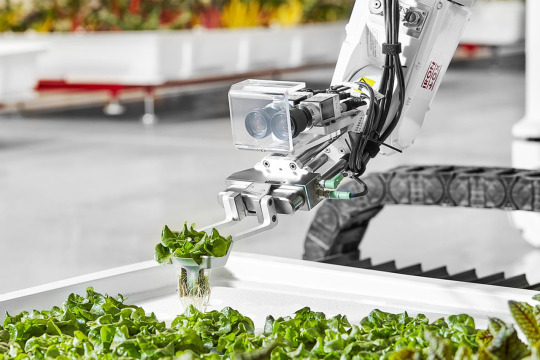
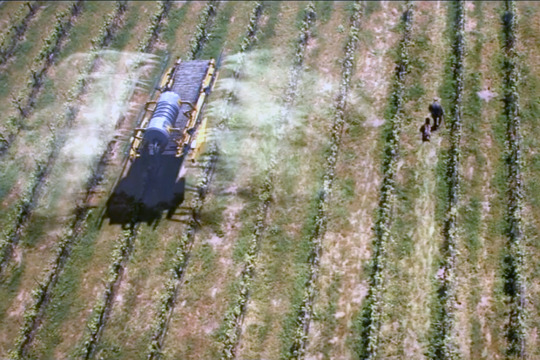


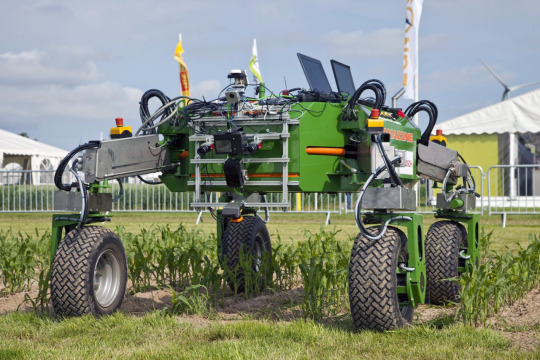
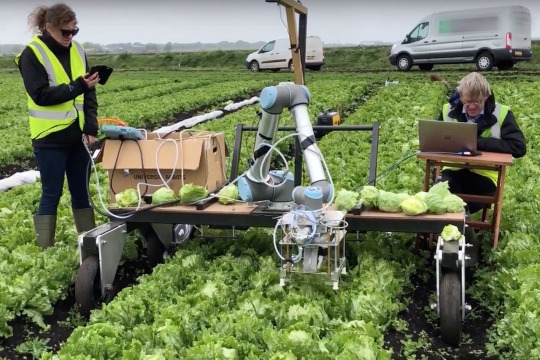
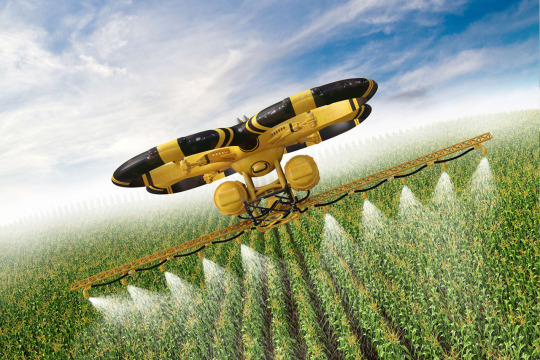
IRON OX´s Agrobots (2020)
Star Trek: Picard (2020) describes a future in which agrobots help the retired astronaut to harvest and produce wine in his chateau.In the early 21st century, universities and startups like Iron Ox use smart machines to follow the path of the 23st century farm.
5 notes
·
View notes
Photo

Discover our solutions for autonomous vehicles #agv #robotics #automatedguidedvehicles #agriculture #agritechnica2019 #agrobot (presso AGRITECHNICA) https://www.instagram.com/p/B4zyIZcoyM2/?igshid=14h8gq3yz3pzx
0 notes
Note
TFPSG plot twist: they only kept the name "Decepticons" because all the names Megatron came up with were terrible.
He was gonna call them the Agrobots at first but it sounded too much like Autobots so he had to change it.
88 notes
·
View notes



